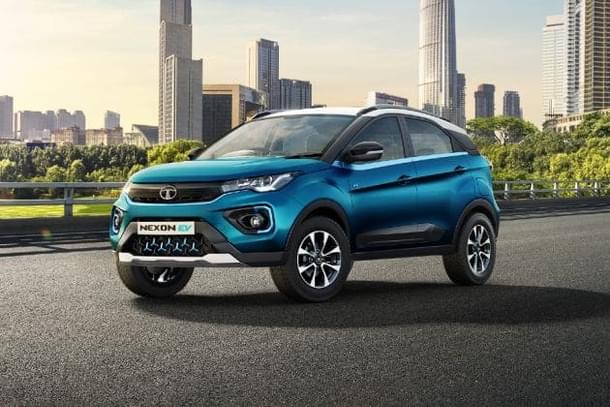Technology
Dear AAP Sarkar, Nexon EV Is A Success Story, Stop Punishing It Based On Ill Informed Complaints
Arihant Pawariya
Mar 03, 2021, 03:18 PM | Updated 07:06 PM IST
Save & read from anywhere!
Bookmark stories for easy access on any device or the Swarajya app.


Tata Motors’ flagship electric vehicle Nexon EV sold 2,602 units last year thereby emerging as the best selling car in the EV (electric vehicle) segment. It was launched on 28 January so technically, sales figures are for 11 months. Moreover, it was a year hit by Covid-19 pandemic.
Then there’s the fact that this offering by Tata costs upwards of Rs 15 lakh which greatly limits its attractiveness especially even among the rich for they would rather go for proper SUVs like Harrier, MG Hector, KIA Seltos or Hyundai Creta at such a premium.
Nexon EV is thus a highly niche product which appeals to rare breed of quirky and environmentally conscious consumers. Still, it’s not a mean feat that this car has captured over 62 per cent of the market share.
Sure, the competition is limited in this segment and there is no direct rival to Nexon in its price range but the fact that it has beaten EV cars priced less as well as cars priced higher than itself shows that this success is not due to the budget factor alone.
Tata’s own sedan EV Tigor has been a dud despite being budget friendly because of less kilometre range per charge. Hyundai Kona EV has higher range than Nexon EV but it costs Rs 8 lakh more. MG Motors’ ZS EV, which is the second highest selling electric car, costs more than Rs 20 lakh.
What works in favour of Nexon EV can be attributed to sweet combo of range per km, its compact SUV design, build quality, design and price which is high but reasonable given high cost of battery packs.
In light of this, it’s surprising that the Delhi government has decided to exclude Nexon EV’s top model XZ+ from list of EVs eligible for its subsidy which is set at Rs 10,000 per Kwh of battery capacity (maximum incentive being Rs 1.5 lakh) for first thousand customers who would purchase electric vehicles under Delhi’s EV policy 2020.
Apart from this, the road tax and registration fee is also waived for these vehicles and the total monetary incentive amounts to Rs 3 lakh — a significant amount.
What’s more surprising is the reasoning and the methodology adopted by the government while delisting Nexon EV XZ+ from its electric vehicle scheme.
Imagine if a government took action against say, Maruti for Swift car not giving fuel efficiency of 23 km/litre as advertised by the company. That would be outrageous. The Delhi government’s order is even more ridiculous given that EV industry is still taking off and is a new technology and rather than punishment over such silly metric, it needs to be given some benefit of doubt.
Anyone who has driven an ICE vehicle (petrol, diesel, etc) would know that the marketed fuel efficiency by car manufacturers is calculated after testing under ideal conditions and not in the real world and there is bound to be difference even without any human factor. And to get close to that ideal efficiency, there are lot of factors involved — driving habits of drivers — if they drive at uniform speed for long distance or engages clutch/gear more frequently, whether AC is switched on or not, condition of roads, traffic and other such real world factors.
The Tata Motors representative told all this to the Delhi government. The company clarified that the 312 km range claim is not its own but that of the Automotive Research Association of India (ARAI) which is the "official body that independently tests all mass-produced vehicles under standard/defined test conditions before they can be offered to customers".
The Delhi government says that the above cannot be used to dismiss the complaint of the single user who has never been able to drive 200 km on a single charge. It’s interesting that the transport minister’s department is willing to believe this single user’s claim on face value without carrying on any independent investigation while trashing ARAI’s certification which Tata Motors has nothing to do with. If anything, the government should take up the matter with ARAI.
Moreover, rather than singling out Nexon XZ+ or Nexon or Tata’s EVs, it should test all EVs km range on full charge as against their advertised ARAI certification. Better still, Delhi government can open its own certification agency for EVs and mandate that those manufacturers which wish their customers to claim the Rs 3 lakh subsidy should compulsorily need to undergo tests as approved by the state government. That would be ideal way of doing things.
The current ad-hoc manner of issuing Tughlaq-type firmans based on a single complaint (conveniently by a user from the minister’s constituency) does Arvind Kejriwal government no good and only sullies its image further.
EV market is in nascent stage. It needs handholding and encouragement. At a time when car manufacturers, foreign and domestic, are serious about investing in EV segment and giving more choices to consumers (and bring down costs further), discouraging them by unpredictable public policies is the last thing Indian public needs.
Arihant Pawariya is Senior Editor, Swarajya.





